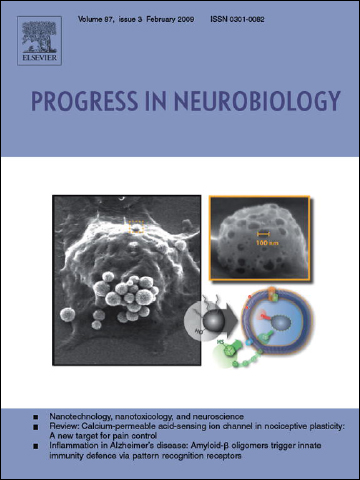“Alzheimer’s Disease (AD) is the most common single cause of dementia in our ageing society. On full assessment and diagnosis of AD, initiation of an AChe inhibitor is recommended as early as possible, it is important that AChe inhibitor therapy is considered for patients with mild to moderate AD.” https://www.ncbi.nlm.nih.gov/pmc/articles/PMC2014378/
Category Archives: Alzheimer’s Disease (AD)
In vivo Evidence for Therapeutic Properties of Cannabidiol (CBD) for Alzheimer's Disease.
 “Alzheimer’s disease (AD) is a debilitating neurodegenerative disease that is affecting an increasing number of people. It is characterized by the accumulation of amyloid-β and tau hyperphosphorylation as well as neuroinflammation and oxidative stress.
Current AD treatments do not stop or reverse the disease progression, highlighting the need for new, more effective therapeutics.
Cannabidiol (CBD) is a non-psychoactive phytocannabinoid that has demonstrated neuroprotective, anti-inflammatory and antioxidant properties in vitro. Thus, it is investigated as a potential multifunctional treatment option for AD.
Here, we summarize the current status quo of in vivo effects of CBD in established pharmacological and transgenic animal models for AD.
The studies demonstrate the ability of CBD to reduce reactive gliosis and the neuroinflammatory response as well as to promote neurogenesis.
Importantly, CBD also reverses and prevents the development of cognitive deficits in AD rodent models.
Interestingly, combination therapies of CBD and Δ9-tetrahydrocannabinol (THC), the main active ingredient of cannabis sativa, show that CBD can antagonize the psychoactive effects associated with THC and possibly mediate greater therapeutic benefits than either phytocannabinoid alone.
The studies provide “proof of principle” that CBD and possibly CBD-THC combinations are valid candidates for novel AD therapies.” https://www.ncbi.nlm.nih.gov/pubmed/28217094
“Alzheimer’s disease (AD) is a debilitating neurodegenerative disease that is affecting an increasing number of people. It is characterized by the accumulation of amyloid-β and tau hyperphosphorylation as well as neuroinflammation and oxidative stress.
Current AD treatments do not stop or reverse the disease progression, highlighting the need for new, more effective therapeutics.
Cannabidiol (CBD) is a non-psychoactive phytocannabinoid that has demonstrated neuroprotective, anti-inflammatory and antioxidant properties in vitro. Thus, it is investigated as a potential multifunctional treatment option for AD.
Here, we summarize the current status quo of in vivo effects of CBD in established pharmacological and transgenic animal models for AD.
The studies demonstrate the ability of CBD to reduce reactive gliosis and the neuroinflammatory response as well as to promote neurogenesis.
Importantly, CBD also reverses and prevents the development of cognitive deficits in AD rodent models.
Interestingly, combination therapies of CBD and Δ9-tetrahydrocannabinol (THC), the main active ingredient of cannabis sativa, show that CBD can antagonize the psychoactive effects associated with THC and possibly mediate greater therapeutic benefits than either phytocannabinoid alone.
The studies provide “proof of principle” that CBD and possibly CBD-THC combinations are valid candidates for novel AD therapies.” https://www.ncbi.nlm.nih.gov/pubmed/28217094
In vivo Evidence for Therapeutic Properties of Cannabidiol (CBD) for Alzheimer’s Disease.

“Alzheimer’s disease (AD) is a debilitating neurodegenerative disease that is affecting an increasing number of people. It is characterized by the accumulation of amyloid-β and tau hyperphosphorylation as well as neuroinflammation and oxidative stress.
Current AD treatments do not stop or reverse the disease progression, highlighting the need for new, more effective therapeutics.
Cannabidiol (CBD) is a non-psychoactive phytocannabinoid that has demonstrated neuroprotective, anti-inflammatory and antioxidant properties in vitro. Thus, it is investigated as a potential multifunctional treatment option for AD.
Here, we summarize the current status quo of in vivo effects of CBD in established pharmacological and transgenic animal models for AD.
The studies demonstrate the ability of CBD to reduce reactive gliosis and the neuroinflammatory response as well as to promote neurogenesis.
Importantly, CBD also reverses and prevents the development of cognitive deficits in AD rodent models.
Interestingly, combination therapies of CBD and Δ9-tetrahydrocannabinol (THC), the main active ingredient of cannabis sativa, show that CBD can antagonize the psychoactive effects associated with THC and possibly mediate greater therapeutic benefits than either phytocannabinoid alone.
The studies provide “proof of principle” that CBD and possibly CBD-THC combinations are valid candidates for novel AD therapies.” https://www.ncbi.nlm.nih.gov/pubmed/28217094
Cannabinoid Receptor 2 Signaling in Neurodegenerative Disorders: From Pathogenesis to a Promising Therapeutic Target.
 “As a consequence of an increasingly aging population, the number of people affected by neurodegenerative disorders, such as Alzheimer’s disease, Parkinson’s disease and Huntington’s disease, is rapidly increasing. Although the etiology of these diseases has not been completely defined, common molecular mechanisms including neuroinflammation, excitotoxicity and mitochondrial dysfunction have been confirmed and can be targeted therapeutically.
Moreover, recent studies have shown that endogenous cannabinoid signaling plays a number of modulatory roles throughout the central nervous system (CNS), including the neuroinflammation and neurogenesis.
In particular, the up-regulation of type-2 cannabinoid (CB2) receptors has been found in a number of neurodegenerative disorders. Thus, the modulation of CB2 receptor signaling may represent a promising therapeutic target with minimal psychotropic effects that can be used to modulate endocannabinoid-based therapeutic approaches and to reduce neuronal degeneration.
For these reasons this review will focus on the CB2 receptor as a promising pharmacological target in a number of neurodegenerative diseases.”
https://www.ncbi.nlm.nih.gov/pubmed/28210207
“As a consequence of an increasingly aging population, the number of people affected by neurodegenerative disorders, such as Alzheimer’s disease, Parkinson’s disease and Huntington’s disease, is rapidly increasing. Although the etiology of these diseases has not been completely defined, common molecular mechanisms including neuroinflammation, excitotoxicity and mitochondrial dysfunction have been confirmed and can be targeted therapeutically.
Moreover, recent studies have shown that endogenous cannabinoid signaling plays a number of modulatory roles throughout the central nervous system (CNS), including the neuroinflammation and neurogenesis.
In particular, the up-regulation of type-2 cannabinoid (CB2) receptors has been found in a number of neurodegenerative disorders. Thus, the modulation of CB2 receptor signaling may represent a promising therapeutic target with minimal psychotropic effects that can be used to modulate endocannabinoid-based therapeutic approaches and to reduce neuronal degeneration.
For these reasons this review will focus on the CB2 receptor as a promising pharmacological target in a number of neurodegenerative diseases.”
https://www.ncbi.nlm.nih.gov/pubmed/28210207




